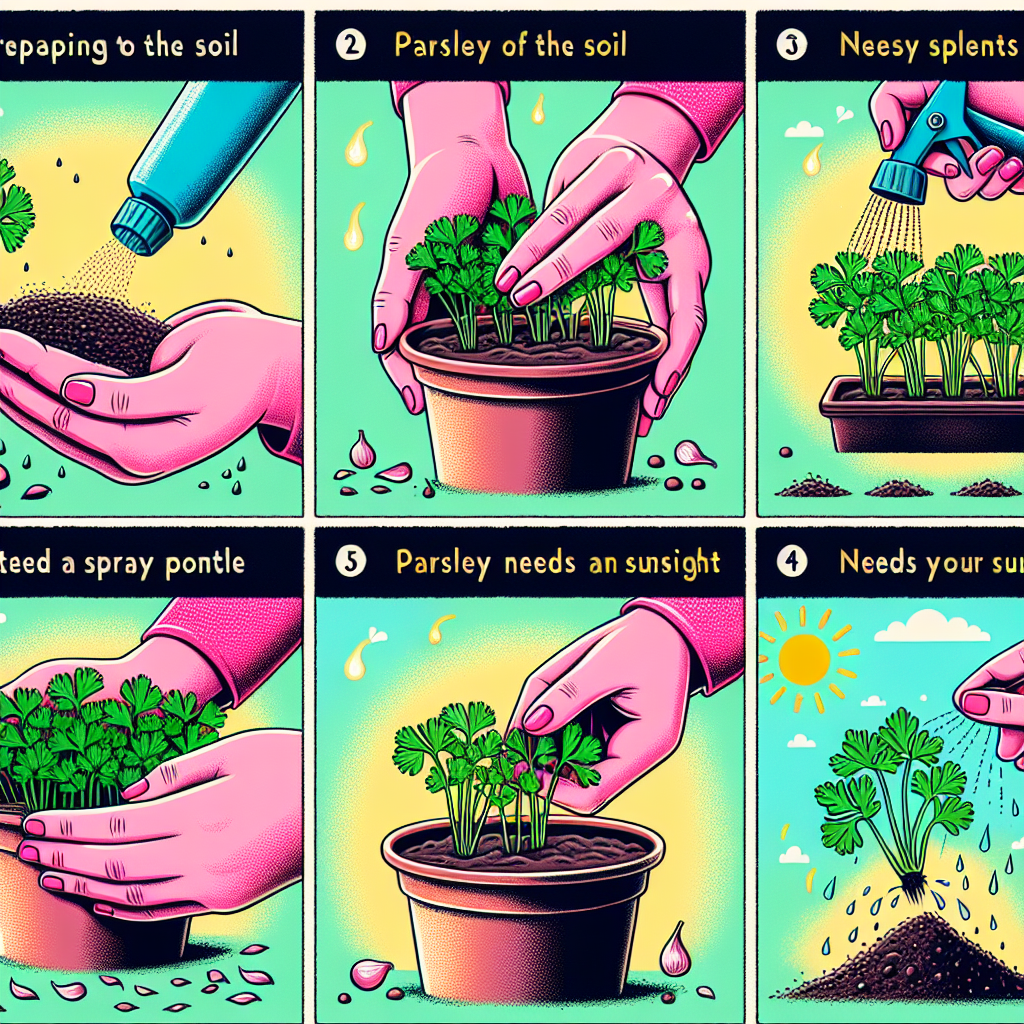
How to plant parsley
Understanding the Basics of Parsley
Parsley is an aromatic herb that belongs to the Apiaceae family, often used to elevate the flavor in a variety of dishes. Whether you opt for the curly or flat-leaf variety, parsley is an excellent addition to any herb garden due to its adaptability and health benefits. If you're thinking about growing this versatile herb, it’s essential to understand its requirements and the steps involved in cultivation.
Benefits of Growing Parsley
Before we dive into the how to plant parsley, it's worth considering why you'd want to grow this herb in the first place. Here are some benefits:
- Rich in Vitamins: Parsley is packed with vitamins A, C, and K.
- Enhances Culinary Dishes: It's a common garnish that adds flavor to soups, salads, and sauces.
- Easy to Grow: Parsley can flourish in pots, gardens, or even indoors.
- Medicinal Properties: It has antioxidant properties and can aid in digestion.
Choosing the Right Variety
When learning how to plant parsley, one of the first decisions you'll make is selecting the right variety for your needs. The two most popular types of parsley are:
- Curly Leaf Parsley: Often used as a garnish, this type is more popular in restaurants and adds a decorative touch to dishes.
- Flat Leaf Parsley (Italian Parsley): This variety is favored by chefs for cooking due to its robust flavor and higher oil content.
Whichever type you choose, both varieties can thrive under similar growing conditions.
---Ideal Growing Conditions
Sunlight Requirements
Parsley thrives in full sunlight but can also tolerate partial shade. Ideally, it requires at least 4-6 hours of sunlight each day. If you're growing parsley indoors, place it near a south-facing window.
Soil Conditions
Parsley prefers well-draining, fertile soil. A loamy or sandy soil enriched with organic matter is perfect for healthy growth. Before planting, consider conducting a soil pH test; parsley thrives best in a pH range of 6.0 to 7.0.
Watering Needs
Consistency is key when it comes to watering parsley. The soil should remain moist but not soggy. Aim to water once a week, adjusting based on weather conditions, so the plants do not dry out.
---How to Plant Parsley
Now that you have an understanding of what parsley needs to thrive, let’s get into the detailed steps on how to plant parsley.
Starting from Seeds
Parsley is typically grown from seeds, which may take time to germinate. Follow these steps:
- Preparation: Choose a container with drainage holes if you’re planting in pots or prepare a garden bed by loosening the soil to about 12 inches deep.
- Sowing Seeds: Soak seeds in water for 24 hours before planting to help with germination. Space them about 12 inches apart if sowing in a garden space, or plant about 2-3 seeds per pot.
- Covering Seeds: Cover the seeds with a thin layer of soil, about 1/4 inch deep, and gently press down to ensure good contact with the soil.
- Watering: Mist the area with water, ensuring the soil is consistently moist, but avoid overwatering.
Transplanting Seedlings
If you've started your parsley indoors, you can transplant seedlings outdoors. Here’s how:
- Hardening Off: About a week before transplanting, gradually expose your seedlings to outdoor conditions for a few hours each day.
- Selecting a Spot: Choose a location with adequate sunlight and well-draining soil.
- Transplanting: Gently remove the seedlings from the pot and plant them in the ground, ensuring to space them about 12 inches apart.
- Watering: Water the newly transplanted seedlings well to help them adjust to their new environment.
Care and Maintenance
Pruning and Harvesting
Your parsley will require ongoing care to ensure it thrives. Here’s how to manage your parsley plants:
- Pruning: Regularly pinch off the tips of the plants to encourage bushiness and prevent them from bolting (going to seed).
- Harvesting: You can begin to harvest leaves once the plant reaches about 6 inches in height. Cut the outer leaves first, allowing the inner leaves to continue growing. This promotes healthy plant development.
Pest Management
Watch out for pests such as aphids and spider mites. If you notice an infestation, treat your plants with insecticidal soap or neem oil. Additionally, encourage beneficial insects like ladybugs, which prey on harmful pests.
---Cooking with Parsley
Once you have successfully grown and harvested your parsley, it's time to use it in your cooking! Parsley adds fresh flavor to a variety of dishes:
- Add it to salads for a burst of color and taste.
- Use it as a garnish for soups and stews.
- Incorporate it into sauces like chimichurri.
- Blend it into smoothies for added nutrition.
Conclusion
Learning how to plant parsley is the first step toward enhancing both your garden and your culinary endeavors. With the right conditions, care, and patience, you can enjoy a bountiful harvest of this amazing herb. Start your parsley journey today, and reap the numerous health benefits and delicious tastes it has to offer!
By Guest, Published on September 24th, 2024